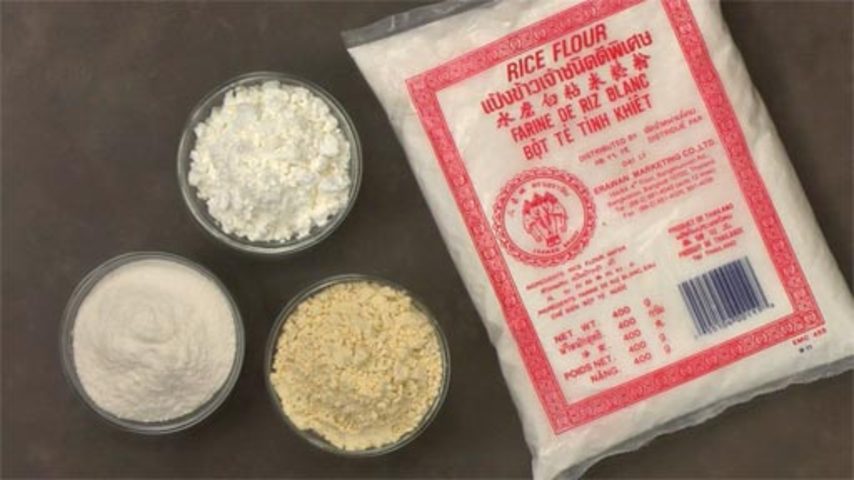Tips & Techniques > How Starch Affects Batters for Frying

When making batters for frying, the type of starch and the amount used will greatly impact the quality of the batter.
In terms of wheat flour, the higher the protein content, the tougher the crust will be because more gluten will be present in the batter. Since gluten absorbs both moisture and fat, the higher the protein content, the chewier and oilier the crust will be (bread flour has 12-16% protein). This is why all-purpose flour, with its moderate protein content (10-12%)is commonly used. The developed gluten helps the batter cling to the food without producing an overly chewy or oily crust. However, if too much flour is used, the batter will produce a very tough crust; and, if too little is used, the crust will be very fragile. For this reason, wheat flour is often combined with other low or no-gluten flours such as cake/pastry flour (7-9%), cornstarch and rice flour to reduce the overall gluten content present in the batter. Rice flour and cornstarch work particularly well because they fry up crispier than wheat flour. They also absorb less moisture and fat during the frying process, making the products less greasy. This is why rice flour is often used when making tempura because it produces a very thin and crispy, dry crust.
The more wheat batters are mixed/whisked, the more gluten will be developed. Many batters are mixed just until they are combined – even if lumps are still present. Other batters are mixed/whisked until completely smooth; however, depending on the ingredients, wheat batters are often left to rest for a period of time in order to let the gluten relax before any food is dipped into it.